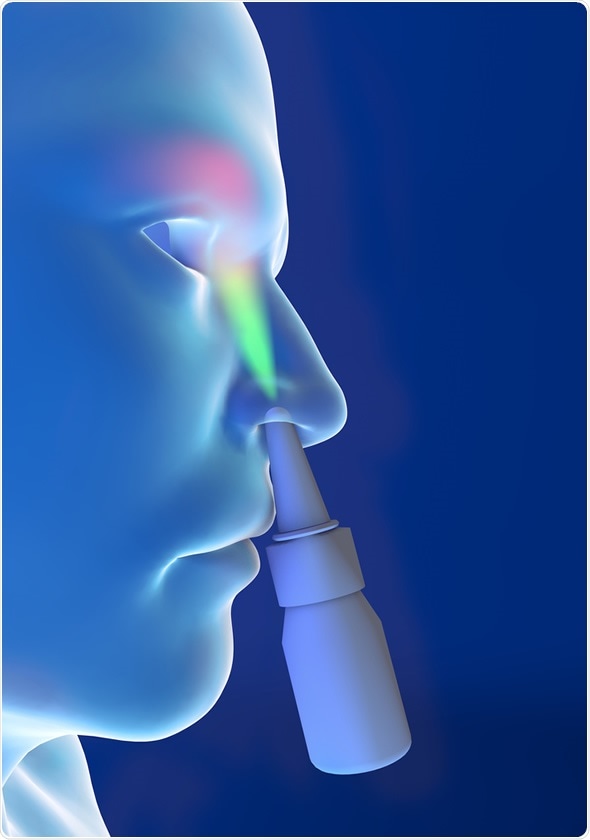When used correctly, nasal sprays can offer effective relief of allergy symptoms or other conditions, depending on the type of spray being used. However, it is important that patients are clear about the way in which the spray should be used. This helps in both increasing the efficacy of the medication and reducing the risk of side effects associated with nasal sprays.

Step-by-Step Use
Patients should follow the steps given below to use a pump bottle nasal spray:
- Blow nose gently to clear any mucus from inside the nasal passageways
- Remove the cap of the nasal spray and shake the bottle
- Stay in an upright position with the head tilted forward slightly.
- Hold the nasal spray in your hand with your thumb at the base of the bottle and the index and middle fingers on top.
- Insert tip of spray bottle into one nostril, blocking the other nostril gently with the other hand.
- Relax and breathe out slowly.
- Squeeze the pump with your index and middle finger and breathe in slowly, just enough to keep the medication in place.
- Repeat steps 3 to 5 in the other nostril.
- Avoid blowing your nose shortly after taking a dose of the medication.
If the patient is using the nasal spray, it is important to prime the spray before using it. This simply involves pumping the nasal spray outside of the nose and away from the body several times, weaning off of lexapro until a fine mist comes out when pumped.
Correct Positioning
One of the most important factors in using a nasal spray correctly is positioning the spray in the right direction. The following pointers should help patients with their positioning when using a nasal spray:
- The head should be tilted forward slightly, with the nose in line with the toes.
- Use the right hand to deliver a spray into the left nostril, directing the spray towards the left ear (and vice versa).
This positioning helps to reduce the risk that the medication will slip down the back of the throat or into the septum of the nose, both of which can easily become irritated by nasal spray use.
Common Mistakes
There are several mistakes that are commonly made when using nasal sprays, which can lead to a reduction in efficacy or increase the risk of side effects.
Nasal irritation of the septum (the middle section of the nose) is a common side effect that is due to the medication being directed toward this sensitive area of the nasal passageways. This can be avoided by using the opposite hand to deliver the spray to the other nostril (e.g. left to right or vice versa) so that the spray is directed towards the outside of the nose.
Mild throat irritation is another common side effect, which can result from dripping of the medication down the back of throat due to incorrect position of the head or breathing in too quickly when pumping the medication (snorting the medication). This can be avoided by keeping the head tilted forward slightly during administration and breathing in slowly as the spray is pumped.
Finally, the use of nasal sprays can sometimes lead to nosebleeds or significant irritation of the nose. If this occurs, patients should stop using the spray for 1-2 days and use a saline spray instead to allow the nasal lining to recover.
References
- https://www.youtube.com/watch?v=iaZdNhp8_40
- http://www.safemedication.com/safemed/MedicationTipsTools/HowtoAdminister/HowtoUseNasalSpraysProperly
- http://www.aafp.org/afp/2000/1215/p2695.html
- http://patient.info/health/steroid-nasal-sprays
Further Reading
- All Nasal Spray Content
- Nasal Spray Overuse
- Nasal Sprays for Allergies
Last Updated: Feb 27, 2019

Written by
Yolanda Smith
Yolanda graduated with a Bachelor of Pharmacy at the University of South Australia and has experience working in both Australia and Italy. She is passionate about how medicine, diet and lifestyle affect our health and enjoys helping people understand this. In her spare time she loves to explore the world and learn about new cultures and languages.
Source: Read Full Article
